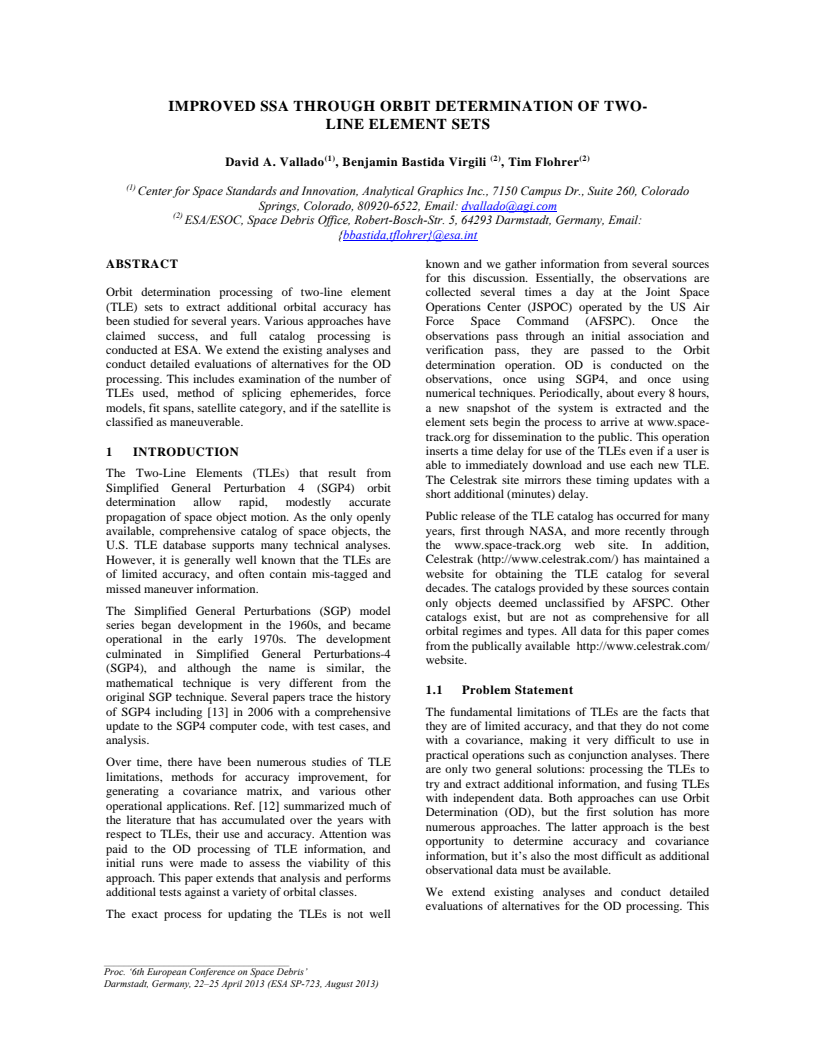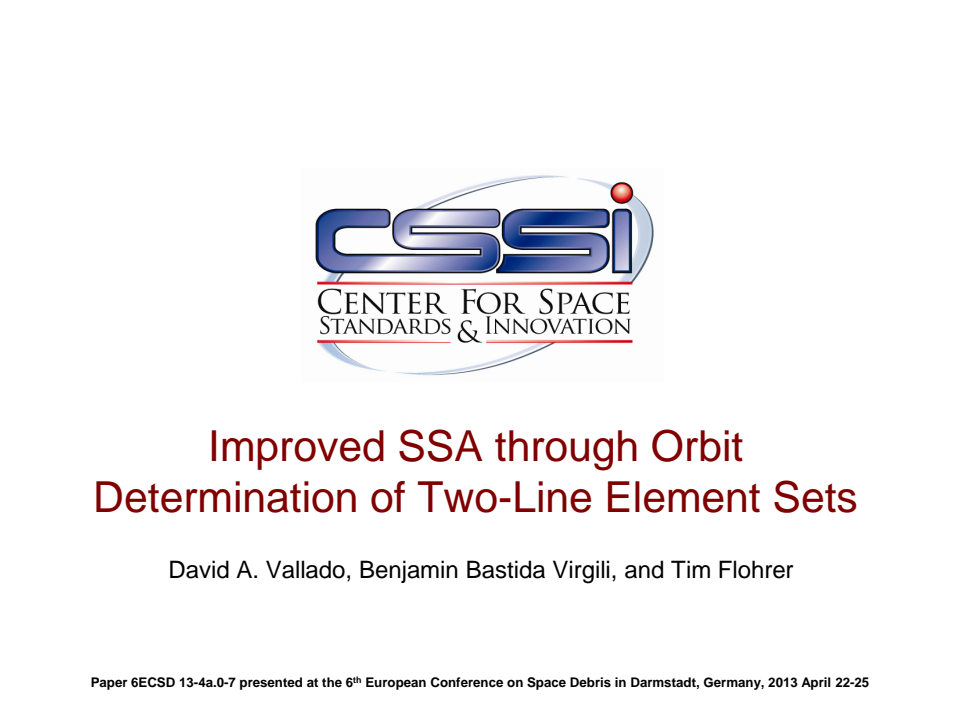Improved SSA through orbit determination of Two Line Element Sets


Id: 295
Type: Conference paper
Published: 04/24/2013
Event: ESA Conference on Space Debris 2013
Authors:
Click an author to filter the list of related assets below.Abstract:
Orbit determination processing of two-line element (TLE) sets to extract additional orbital accuracy has been studied for several years. Various approaches have claimed success, and full catalog processing is conducted at ESA. We extend the existing analyses and conduct detailed evaluations of alternatives for the OD processing. This includes examination of the number of TLEs used, method of splicing ephemerides, force models, fit spans, satellite category, and if the satellite is classified as maneuverable.
Citation:
Vallado, David A., Benjamin Bastida Virgili, and Tim Flohrer. 2013. Improved SSA through Orbit Determination of Two-Line Element Sets. Paper 13-4a.O-7 presented at the 6th European Conference on Space Debris, April 22-25. Darmstadt, Germany, accessible at https://comspoc.com/Resources/Content/Private/C-20220425T160218/Paper/ECSD%202013%20Improved%20SSA%20Through%20Orbit%20Determination%20of%20Two-Line%20Element%20Sets.pdf.
Papers with related authors:




Using Spacebook and Cesium to Promote and Enhance Flight Safety
Read More

Actionability and Persistence Of Conjunction Data
Read More

Actionability and Persistence of Conjunction Data
Read More

Practical issues with using a full gravity field
Read More
LEO satellite behavior during the May 2024 Gannon geomagnetic storm
Read More
Deep operator and SSA collaboration for space sustainability
Read More
Synthetic Covariance Production Using a New Digital Approach
Read More
Contrasting the Inflection Points and Efforts in Space Traffic Coordination and Management
Read More
Addressing the debilitating effects of maneuvers on SSA accuracy and timeliness
Read More
Actionability and Persistence of Conjunction Data
Read More
DEEP OPERATOR AND SSA COLLABORATION FOR SPACE SUSTAINABILITY
Read More


Russian ASAT Debris Cloud Evolution and Risk
Read More
Results of comprehensive STCM data fusion experiment
Read More





Debris Risk Evolution And Dispersal (DREAD) for post-fragmentation modeling
Read More
Sequential Processing of ILRS Observations – Experiences over the last 5 years
Read More

Fragmentation event debris field evolution using 3d volumetric risk assessment
Read More

Application of New Debris Risk Evolution And Dissipation (DREAD) Tool to Characterize Post-Fragmentation Risk
Read More
Orbital Strategies to Mitigate the Solar Exclusion Effect on Space-Based Observation of the Geosynchronous Belt
Read More
New Consolidated Files for Earth Orientation Parameters and Space Weather Data
Read More
Updated Analytical Partials for Covariance Transformations and Optimization
Read More
Sequential Orbit Determination Using Satellite Laser Ranging
Read More


Evaluating Gooding Angles-only Orbit Determination of Space Based Space Surveillance Measurements
Read More
ORBIT DETERMINATION ISSUES AND RESULTS TO INCORPORATE OPTICAL MEASUREMENTS IN CONJUNCTION OPERATIONS
Read More


